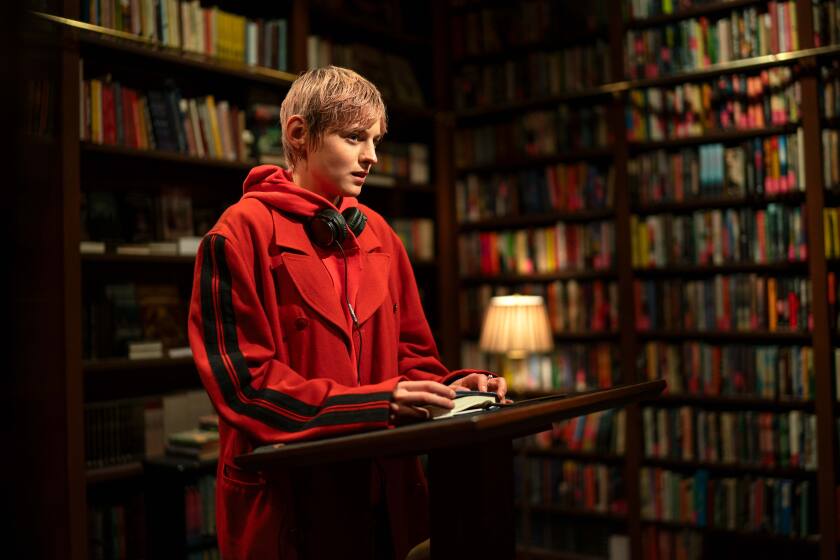They wanted to upend the TV detective formula. Enter the unassuming but formidable Darby Hart
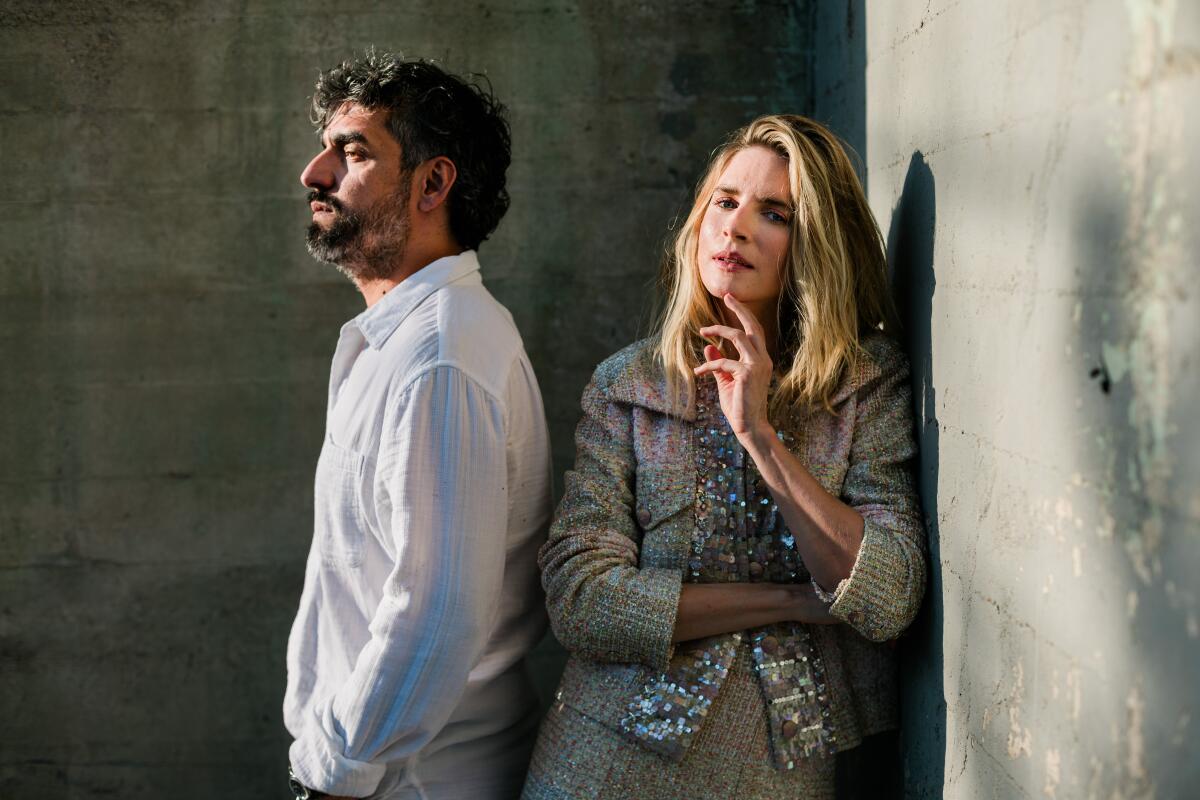
- Share via
The mystery begins thus: “A young woman in basketball shorts and a hoodie — she’s the same age as Google — walks down the street towards a bookstore.” That’s how creators Zal Batmanglij and Brit Marling describe stage directions that introduce Darby Hart (Emma Corrin), protagonist of the FX limited series “A Murder at the End of the World.” Darby quietly waits in the back of a small crowd until she’s summoned to the lectern to read from her own true-crime memoir.
Enter the next great TV detective.
“Darby knocked us out. We were developing other ideas, but then she just came and wouldn’t let go,” says Batmanglij. Though he takes issue with the TV label, Batmanglij stresses how the streaming age has freed storytelling from the bonds and structures that would have made this story less interesting to tell: “It’s not film, it’s not TV, it’s some hybrid.”
Indeed, the seven-episode “Murder” wears its intellect and social concerns on its sleeve in ways that would have made the gatekeepers of old slam their portals shut. The climate crisis, for instance, is woven into the fabric of a murder mystery; the series’ depiction of sex and sexuality is considerably more adult (and realistic) than you’re likely to find on a broadcast procedural; and its very structure gleefully violates rule after rule of how it’s been done before.
FX’s miniseries “A Murder at the End of the World” is an excellent, contemporary twist on an Agatha Christie-style mystery set in a snowbound Iceland hotel.
And its protagonist — thoughtful but punkish-looking, pink-haired Darby, a 24-year-old amateur sleuth who is low-key the smartest person in the room — doesn’t fit the template of the standard whodunit heroine. But here she is, an unlikely attendee at a summit of great thinkers engineered by a tech titan named Andy Ronson (Clive Owen) and his wife, Lee Andersen (Marling), a legendary hacker who has retreated from public life. The assembled accomplished geniuses include the first woman to walk on the moon (Alice Braga), a Chinese builder of “smart cities” (Joan Chen), an omnivorous venture capitalist (Raúl Esparza) and a Banksy-like artist-activist (Harris Dickinson), among others.
So what is Darby, this young, tech-savvy, first-time author doing among these heavy hitters? Marling says she and Batmanglij showed the series to a friend familiar with the milieu, and he said, “A person who looks like that on these technology retreats is usually there for sex.”
The task of making this slight creature a formidable force was the very thing that drew them to it. As Darby says, “No one sees a 24-year-old girl coming.”
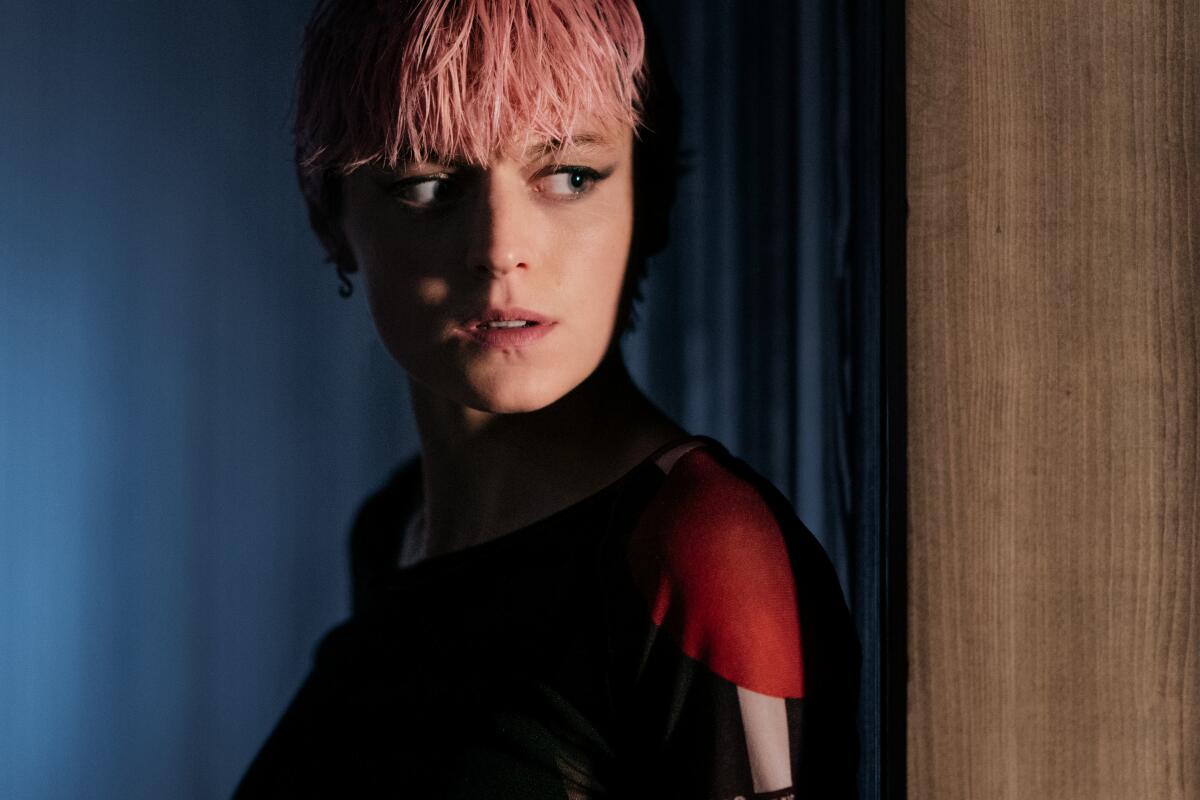
The pair’s catalog of screenplays, teleplays and directorial efforts, and Marling’s performances, are marked by a striving, searching intelligence. Yet after Marling broke into the industry thanks to a succession of well-received films at Sundance, she says the roles she was offered were neatly plucked from the “girlfriend or wife” or “bikini girl” ... or “dead girl” lockbox. The Darby Harts of the world “were simply not on offer.” So crafting a young woman who is underestimated, even dismissed, at this highfalutin’ meeting of minds came from experience. Although, as countless lesser detective stories prove, it’s difficult to convey that a character really is the smartest person in most rooms.
“Brit says the only thing you can’t act is brilliance,” says Batmanglij.
Establishing that Darby’s deductions aren’t magic, but entirely earned, was a top priority. “We spent a lot of time doing deep research to try to think of the proofs we could build that would get you on board,” says Marling.
What the others at the retreat don’t know about Darby is that she grew up as the coroner’s daughter and was on crime scenes from the time she was 8, Marling says. “She found amateur sleuthing when she was in her teens. She’s logged her 10,000 hours on the internet, solving cold cases.”
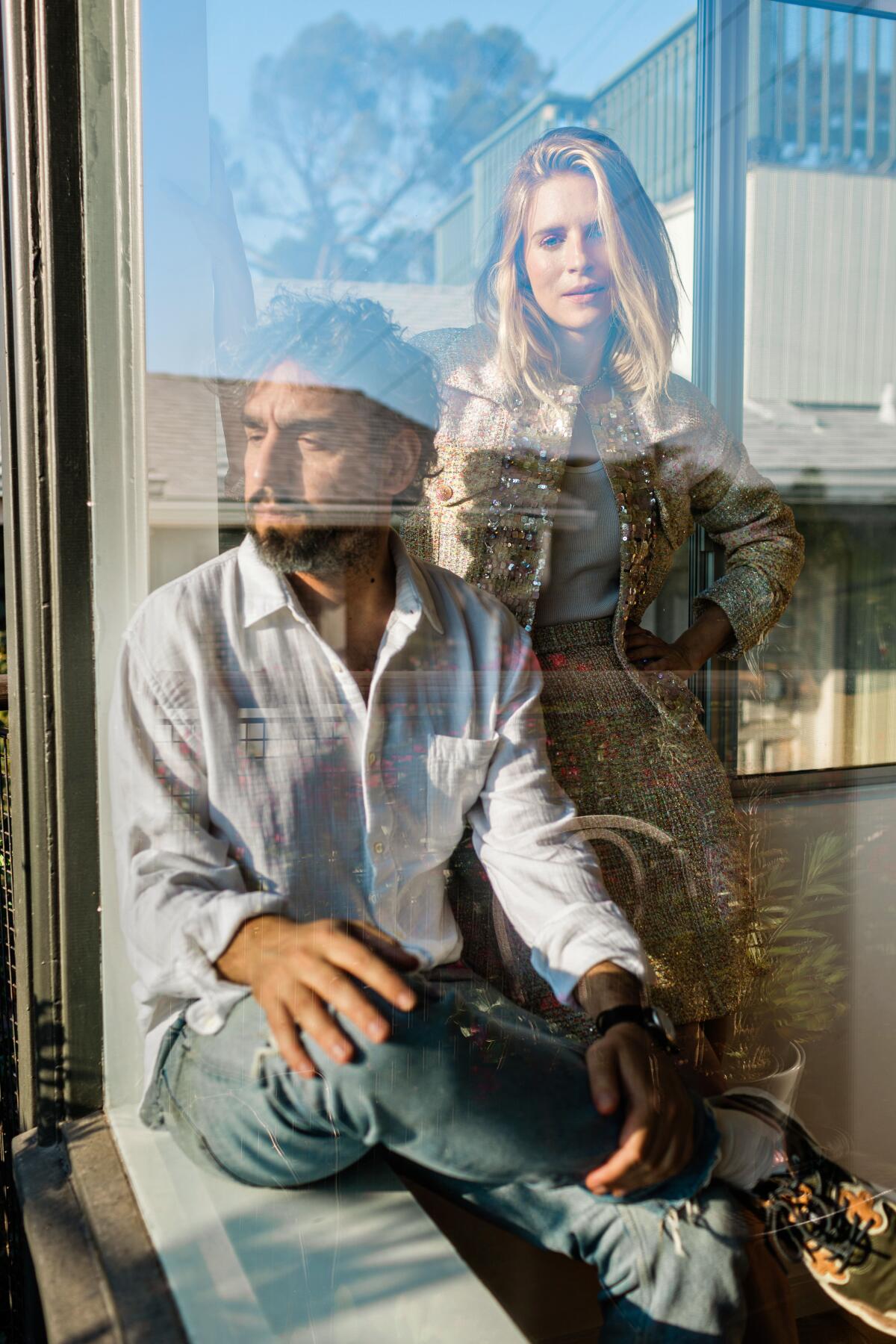
Thus the series simultaneously unspools two mysteries: the titular murder in the show’s present and a string of crimes in the past, as teen Darby tracks a serial killer while falling in love with her sleuthing partner. We see her dogged legwork; we see her flashes of inspiration. That origin story is introduced in the show’s opening moments, as present-day Darby reads from her true-crime chronicle of the experience — beginning at its end.
“With all our internalized prejudices, we don’t necessarily believe she has a right to be there,” Marling says. “In order to build [that] proof, you have to braid it with her past at the same time, so you’re using her origin story to [convince] the audience, ‘No, this young woman doesn’t have to be the victim at the scene of the crime. She can be the person solving it.’”
As a narrative device, that braid keeps viewers juggling — and invested in — two timelines, but also provides the pieces of proof that build the larger argument: Darby’s intelligence is real. So it’s all the more frustrating when, in the present, she is dismissed and obstructed.
“The scene where Darby interviews the other guests, which is a classic trope of the genre and would usually happen at maybe minute 30 in a movie or the second chapter of a series — every time we tried to write that scene, it did not feel real. It felt like Nancy Drew or a little tongue-in-cheek and pushed and not credible,” Marling says. “It wasn’t until we had done five hours of storytelling with Darby that she could interrogate the guests, but only if Andy was sitting next to her.”
Batmanglij adds, “The generation below us has grown up completely in the world of technology. “We were fascinated by [that dynamic] that allows this generation to go toe-to-toe with a billionaire who has all the power and intelligence and all this stuff,” he says. “We wanted to tell a story of how this generation can hold the other generations to task.”
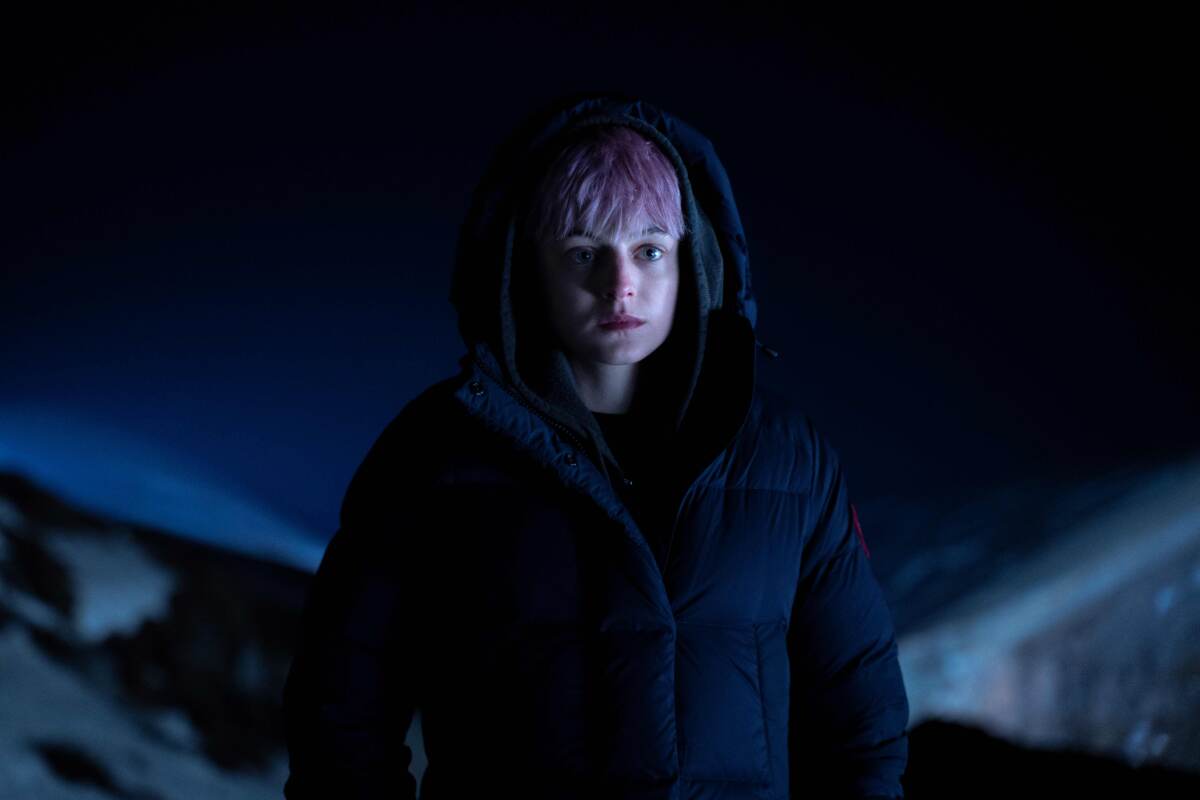
That dynamic is also subtly expressed as one of the series’ themes: the climate crisis. Big ideas permeate the pair’s work, including cult-like devotion (“Sound of My Voice”), environmentalism in the extreme (“The East”) and existence beyond death (“The OA”). The title of the new series is a double-entendre: The retreat takes place in Iceland, which some would consider the end of the world; and the climate crisis — the looming end of the world.
As one character in the series, a gloomy alcoholic climate activist, says, “Climatologists who’ve been in the game a long time know how it’s going to end ... and sooner than you think.”
When it comes to climate change, “it’s not that we don’t have the answers,” Marling says. “We all know what we need to do; we just seem unable to do it. A lot of activists talk about reaching a place of burnout, where you’ve been at it for so long and the resistance is so intense — and growing more intense — that you can be deflated.”
Despite the darkness of that scene, Marling says she kept thinking about how there is still hope for change.
“It may be a sharp-edged hope, hope like a razor blade, but you can use a razor blade to cut a hole in a box you’re stuck in and crawl out,” she says.
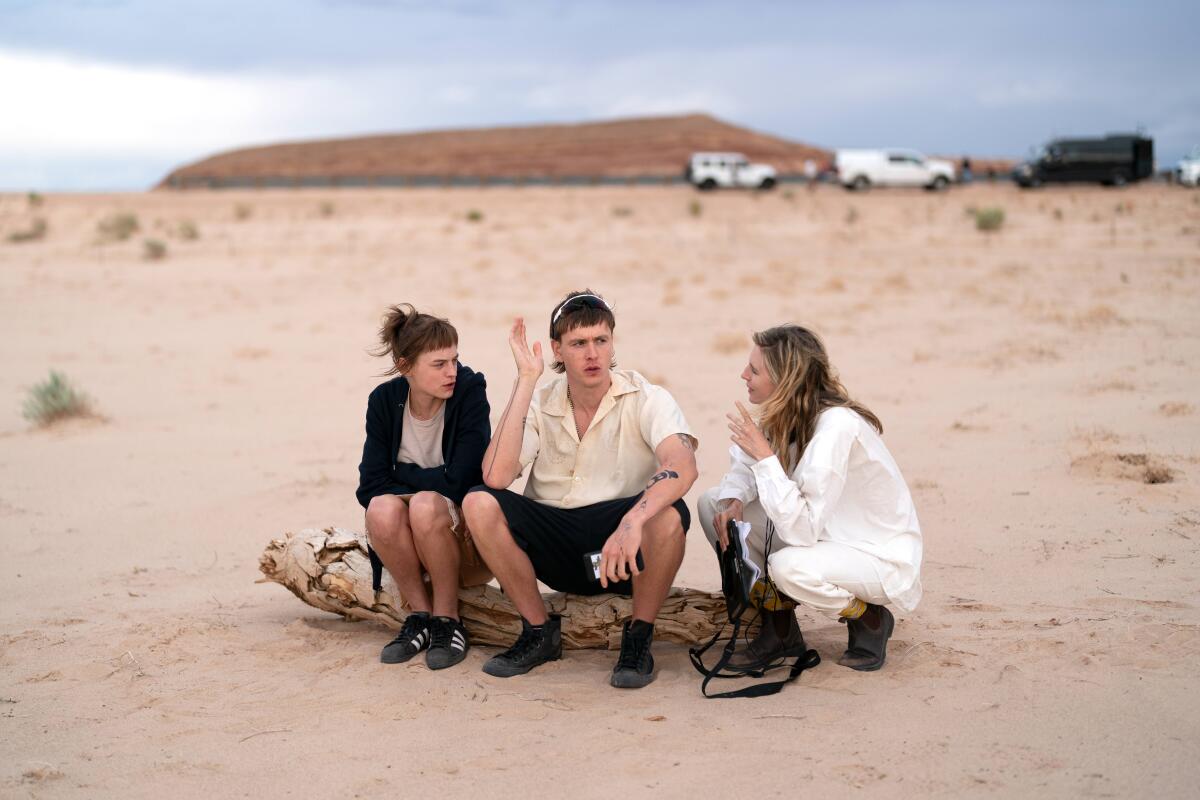
Darby, meanwhile, is at work on a very literal, immediate scale as she applies her technological wizardry and creativity to problems throughout. Rather than represent that merely by the all-too familiar trope of someone zipping through lines of code on a screen, she engineers a brilliant hack through a vessel that it’s unlikely would occur to most (no spoilers here, but Marling insists it’s real; a lightbulb moment from their research).
“We also cast an incredibly smart actor to play the part,” says Batmanglij of Corrin, the Emmy nominee who made their first big splash as Princess Diana on “The Crown,” and has starred in the films “My Policeman” and “Lady Chatterley’s Lover.”
“There’s a kind of acting where people can change on an almost molecular level, internally, to become something,” says Marling. “I think Emma has that and it’s extremely rare. I didn’t know how much they had it until I saw them three or four months after shooting and hugged them, and realized they were Emma again and I was hugging a different person from the one we had been with on set for six months, who was Darby.”
Darby isn’t coolly examining clues in what Batmanglij calls a “cold-blooded thriller.” He says it was crucial to Marling to make a “hot-blooded thriller” instead, in which Darby has skin in the game (it’s an ironic description, considering the near-Arctic environs and that most of the action takes place within the austere stone walls of a sleek, remote, futuristic hotel).
In tracking the serial killer, she’s also not one of those familiar detectives “putting themselves in the perpetrator’s shoes,” he says. “They say, ‘What an artist the serial killer is.’ Brit said one of the reasons Darby had to be young is because so many of the victims on screen are young women. So a young woman comes up to the body and ... she’s not admiring the artistry of the killer; she’s empathizing with the victim.”
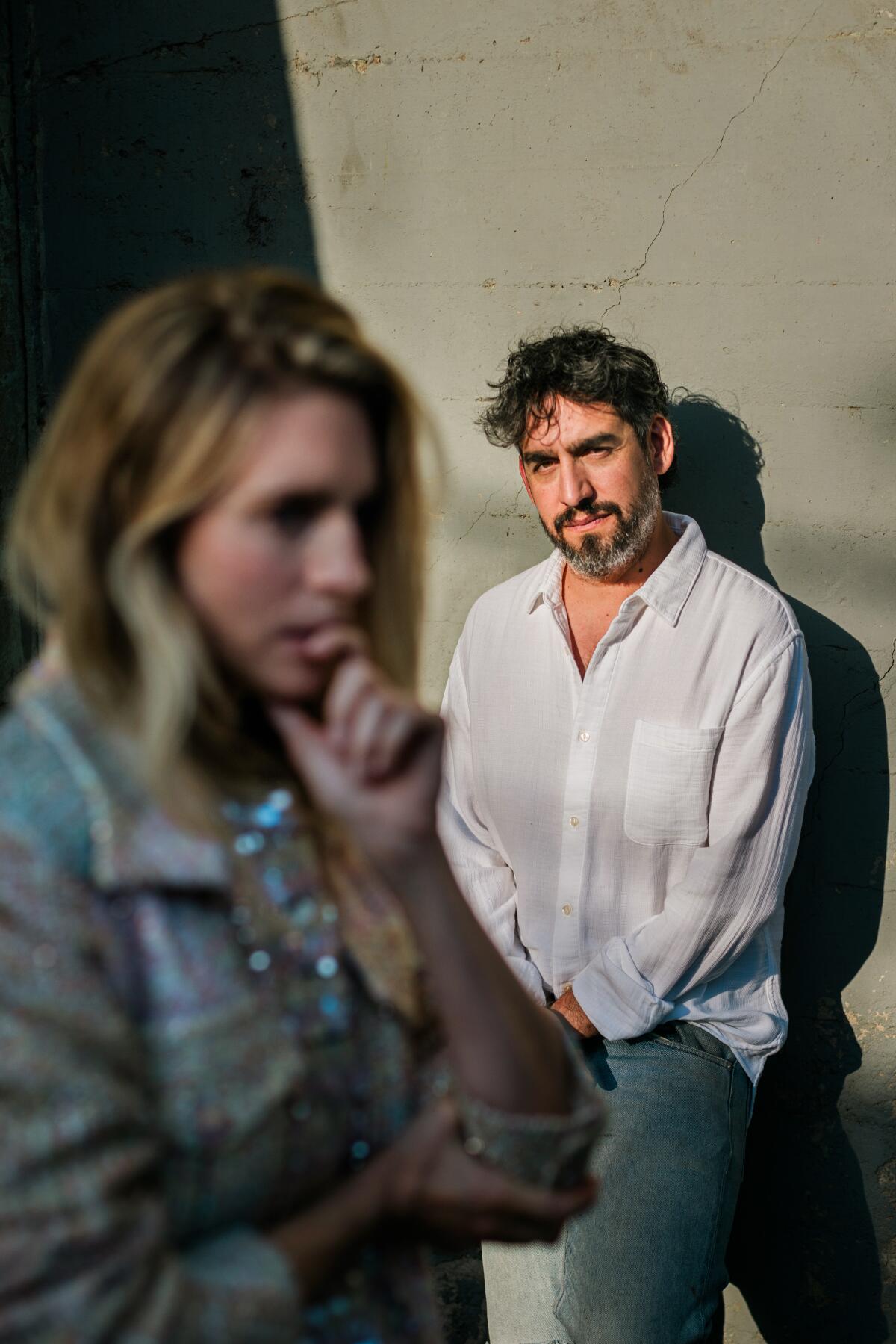
Marling says she was more interested in the victim’s intelligence, their life and what brought them to that point, “which is equally a way to solve a case.”
“We’re not interested in celebrating serial killers,” says Batmanglij. “We’re not interested in fetishizing gore. Brit was adamant: ‘We cannot have any violence against women on screen.’ So the whodunit was a gift to us because it’s a genre that inherently keeps the violence off screen.”
But most of all, the series is a mystery, and one that rewards deeper consideration. It’s loaded with details that gain substance on repeat viewing. For Batmanglij, the most resonant Easter eggs are the emotional ones, how some performances gain added dimension when the viewer is aware of the true meaning of certain moments.
“You pair that with a desire for the detective to transform,” says Marling. “In most detective stories, they are a constant. But we wanted her to have an arc. It’s part of the dance with the past [in the storytelling structure] and the realization of what happened in her coming-of-age story and her first love.”
Marling describes a scene in the fifth episode, which she directed, where Darby is contending with her past and her identity. She thinks a lot about Corrin’s performance, where Darby talks to herself in a room, saying the actor “visited a place of pain and honesty.”
“Darby says, ‘It feels like I have no skin and there’s nothing left between me and the world,’” Marling says. “I know something about that from writing it; I know what it feels like to not have any skin against the world, but Emma taught me something else about it when they performed it. It was so much deeper and more raw and vulnerable than the place I went to to write it.
“And that is, I think, why we do what we do — to be met by another artist in that black void and have their hand reach out and touch yours and to feel, for a moment, not alone.”
More to Read
The complete guide to home viewing
Get Screen Gab for everything about the TV shows and streaming movies everyone’s talking about.
You may occasionally receive promotional content from the Los Angeles Times.
